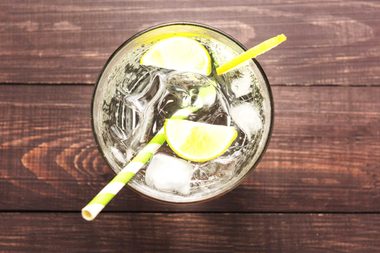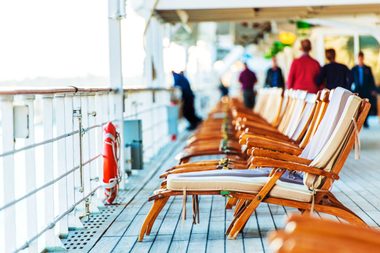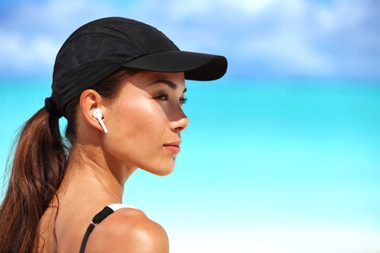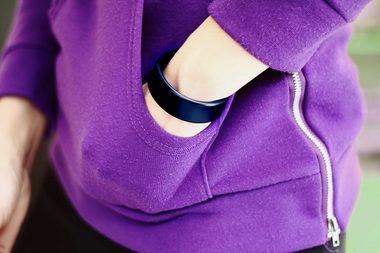
Eat and drink light
Skip the fried Oreos and amusement park beers—a stomach full of greasy or heavy foods increases the odds that you develop nausea. “People should abstain from alcohol, which can make us physically unstable; eat lightly; and drink only liquids that look like water—no coloring of any kind,” says motion sickness expert Thomas A. Stoffregen, director of the Affordance Perception–Action Laboratory at the School of Kinesiology at University of Minnesota. But don’t go too far in the other direction and hit the rides with an empty stomach—skipping meals can lead to nausea too. Find out why only some people get motion sickness.

Pop a pill or try a patch
Many motion sickness sufferers swear by over-the-counter remedies like meclizine (AKA Bonine) and dimenhydrinate (AKA Dramamine) to prevent queasiness. (In fact, some people find a cocktail of the two allows them to ride nausea-free.) Scopolamine is a motion sickness patch that requires a doctor’s prescription but is also very effective at reducing nausea. All three types of motion sickness medicines need to be administered at least a half hour before you hit your first ride.

Add a little spice
Specifically, ginger. The noted all-natural morning sickness helper can also be effective for preventing and alleviating motion sickness. “There is some reliable evidence that ginger helps, so I recommend small amounts of ginger—hard candy, or a few ginger snaps,” says Stoffregen. Try these other natural remedies for an upset stomach.
Try acupressure
Acupressure bands apply gentle pressure to nerves in the crease on the inside of your wrists that have been linked to the stomach in Eastern medicine. And they’ve been shown to be effective at reducing that nauseated feeling that motion sickness brings. Don’t have the bands handy when you’re feeling the effects? Try applying pressure to the crease of your inner wrist with the thumb and forefinger of your opposite hand.

Stabilize your headroller
Feeling queasy on a coaster? Do your best to keep your head steady to minimize the motion, which may just mean leaning back. “On a roller coaster, use any headrest that’s available to reduce susceptibility,” Stoffregen says. “Close your eyes and keep them closed.”

Sync up your senses
“Sensory mismatch,” where you’re sensing movement with your body, but not seeing it with your eyes, can often lead to motion sickness. Stoffregen recommends doing what you can to minimize that effect. On a cruise, for instance, “Stay out on the open deck, and keep the horizon in view,” Stoffregen recommends. “Sitting is generally more stable, so if there are deck chairs, use them. Do not read and especially do not look at any type of electronic device, which could exacerbate the mismatch. Talk with people as much as you like, but look at the horizon, not at your conversational partner.” Check out these other 11 smart tricks to avoid getting sick on a cruise.

Watch for new treatments
New technology could pave the way for quelling motion sickness. Galvanic vestibular stimulation, which uses an electrical current to affect the nerves in the ear responsible for balance, could potentially reduce motion sickness with a simple headset or earbud. Stoffregen believes that “postural sway,” the tiny movements your body makes to keep you upright, could be a big factor in whether you develop motion sickness—and that technology could help minimize the impact. “With contemporary technology, it is possible to monitor postural stability,” Stoffregen says. “It should be possible to use these real time data to change ongoing motion stimulation in ways that will promote stability.” Like posture monitors and step counters, new sensors could be used to retrain your body to avoid postures that lead to motion sickness. And that could make your next Tilt-a-Whirl or cruise a whole lot easier to stomach. On a plane, try these 10 tricks for avoiding airsickness on long flights.

